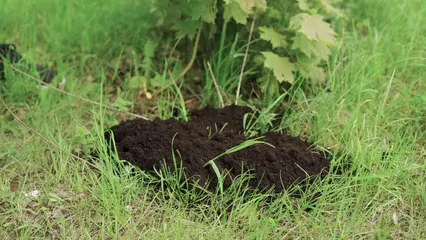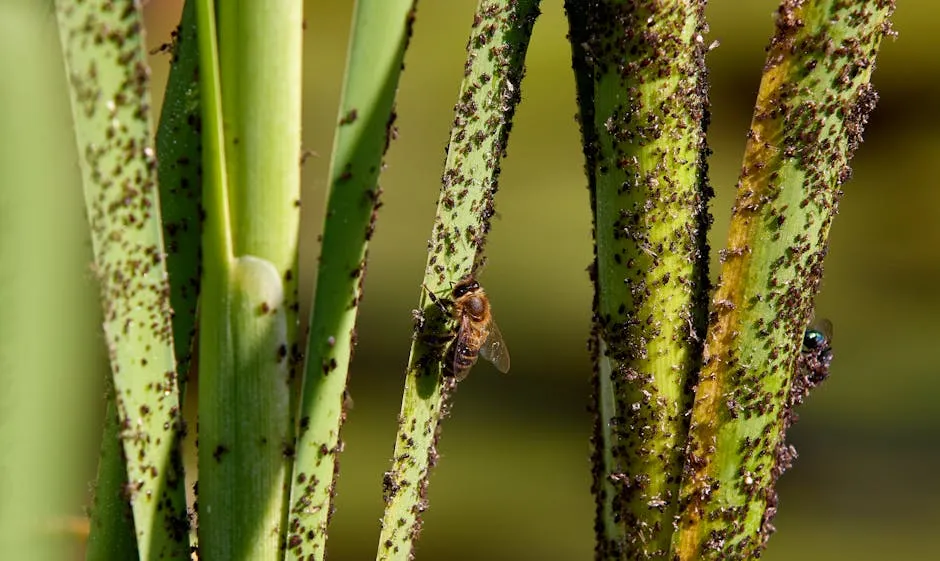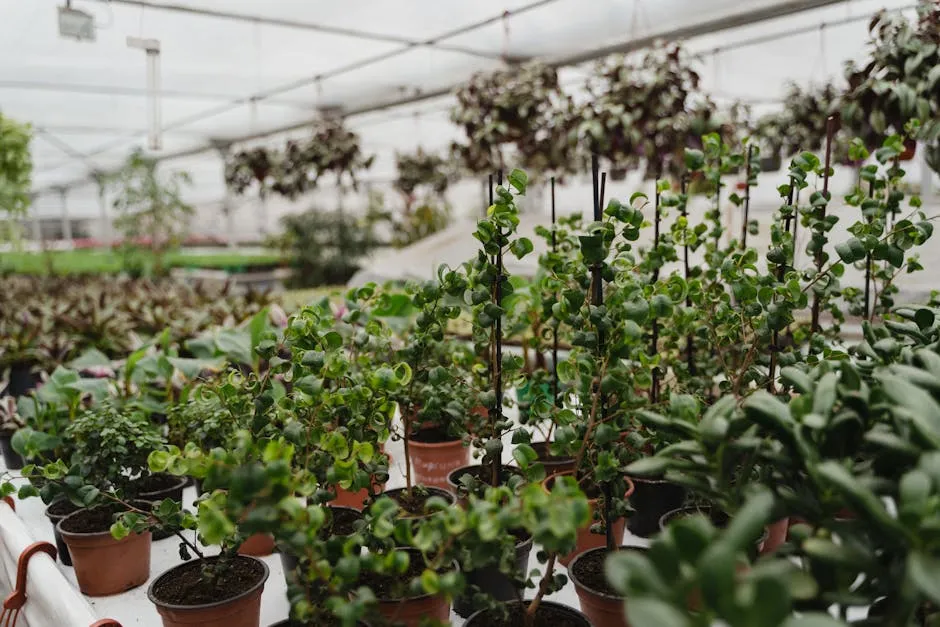
Lamb’s Ear Plant: A Comprehensive Guide to Growing and Caring for Stachys
Introduction
Lamb’s ear, or Stachys byzantina, is a charming perennial. Its soft, fuzzy leaves resemble a baby sheep’s ear, adding unique texture to gardens. Gardeners love this plant for its low maintenance and striking appearance. In this article, we’ll discuss how to grow, care for, and enjoy the benefits of lamb’s ear.
Enhance your gardening experience with some gardening gloves. Protect your hands while you dig, plant, and prune, making your gardening experience not only enjoyable but also safe!
Summary and Overview
Lamb’s ear, scientifically known as Stachys byzantina, hails from the Middle East, particularly Turkey and Armenia. This perennial features large, velvety, silvery leaves that create a dense mat, perfect for borders and ground cover. In late spring to early summer, it produces delightful purple or pink flowers that attract pollinators.
One of the best qualities of lamb’s ear is its resilience. It tolerates drought well and resists pests like deer and rabbits. It thrives in well-drained soil with moderate fertility, preferring full sun to partial shade. To ensure healthy growth, avoid rich soils and overwatering, which can lead to root rot. With minimal care, this plant can provide year-round beauty and texture in your garden.

For the best results, consider using organic compost to enrich your soil. It provides essential nutrients while maintaining a healthy environment for your plants!
Growing Lamb’s Ear
Ideal Growing Conditions
Lamb’s ear thrives in full sun to partial shade. Aim for at least six hours of sunlight daily for the best results. This plant prefers well-drained soil with moderate fertility. Avoid heavy, rich soils, as they can lead to excessive growth and root issues.
Watering is crucial during the establishment phase. Keep the soil consistently moist but not soggy. Once established, lamb’s ear is drought-tolerant. Aim for about one inch of water per week during dry spells.
Proper soil drainage is vital for growth. It helps prevent root rot and encourages healthy development. Lamb’s ear is hardy in zones 4 to 8, making it suitable for various climates.

Take a moment to assess your garden’s conditions. Is the sunlight adequate? How well does the soil drain? These factors will ensure your lamb’s ear flourishes. You might also consider investing in a soil moisture meter to monitor moisture levels accurately!
Planting Techniques
The best time to plant lamb’s ear is in spring, after the last frost. This timing allows the plants to establish before the heat of summer. When planting, space your plants about one foot apart. This spacing promotes airflow and helps prevent disease.
For planting depth, place the crown of the plant at soil level. Avoid burying it too deep, as this can lead to rot. If you’re replanting divisions, ensure they are well-established before transferring them to their new spot.
Consider your garden layout carefully. Lamb’s ear works well in borders and as ground cover. Share your planting experiences! What techniques have worked for you? Let’s learn together, and don’t forget to grab a reliable garden trowel for planting!

For effective planting, utilize the best companion planting techniques for vegetable gardens 2024 to enhance your garden’s productivity.
Care and Maintenance
Watering and Fertilization
Proper watering is essential for lamb’s ear. After establishing your plant, aim for about one inch of water each week. This helps keep the soil moist without becoming soggy. Overwatering can lead to root rot, a common issue for this plant. Watch for signs like yellowing leaves or wilting, indicating too much water.
Fertilization requires some caution as well. Lamb’s ear thrives in poorer soils, so avoid rich fertilizers. Too many nutrients can lead to excessive leaf growth at the expense of blooms. For best results, if you feel the need to fertilize, use a light compost application in early spring. Consider a quality organic fertilizer to give your plants a gentle boost!

Are you ready to enhance your gardening skills? Subscribe for more tips on plant care and sustainable gardening!
Pruning and Deadheading
Pruning lamb’s ear helps maintain its health and appearance. Begin by deadheading spent flowers to prevent self-seeding. This technique encourages new blooms and keeps the plant from spreading too much.
Remove damaged or yellowing foliage regularly. It’s best to prune in early spring or after flowering. Healthy pruning practices promote airflow and reduce the risk of disease.
By keeping a seasonal pruning schedule, you can enjoy a thriving lamb’s ear plant all year long. Why not get started today? Your garden will thank you! And while you’re at it, consider using gardening shears for precise cuts!

Propagation Techniques
Division and Seed Propagation
Propagating lamb’s ear can be done through division or seed. Dividing the plant is the most efficient method. It’s best to do this in spring. Gently lift the plant and separate it into sections. Each section should have healthy roots and leaves. This method ensures new, vigorous plants that retain the parent plant’s characteristics.
Seed propagation is another option, but it comes with challenges. Hybrid varieties may not produce true-to-type offspring. If you choose this method, collect seeds after flowering. Start seeds indoors about 6 to 8 weeks before the last frost. Transplant them outdoors once the weather warms up.

Timing is crucial for both methods. Spring is ideal for division, while late winter or early spring works for seeds. Keep in mind that division usually yields quicker results. Have you had success with propagation? Share your stories in the comments! And don’t forget to document your gardening journey with a gardening journal!
Pests and Problems
Common Pests and Diseases
Lamb’s ear is generally resistant to pests, but some can still pose problems. Slugs and snails are the most common culprits. They enjoy the plant’s soft leaves. To manage these pests, try using barriers or natural repellents. Hand-picking can also be effective.
Fungal diseases can arise in humid, overwatered conditions. Watch for signs of leaf spots or wilting. These issues often stem from poor air circulation and excess moisture. To prevent problems, ensure your plants have adequate spacing. This promotes airflow and keeps the leaves dry.

Proper watering is essential. Allow the soil to dry out between waterings. This simple adjustment can help prevent root rot. Have you dealt with pests in your garden? Share your pest management strategies with us! Maybe you need some organic pest control spray to help!
Companion Planting
Best Companion Plants
Companion planting is a great way to boost your garden’s health. Certain plants thrive alongside lamb’s ear, enhancing growth and beauty. Consider pairing lamb’s ear with Black-Eyed Susan seeds and Yarrow seeds. Black-Eyed Susan adds vibrant yellow flowers that attract beneficial insects. Yarrow, with its feathery leaves and flat-topped flowers, supports pollinators while enhancing aesthetic appeal.
Companion planting also provides natural pest control. By mixing different plants, you can deter harmful insects. This method creates a balanced ecosystem in your garden. Proper spacing is key; aim for about one foot between lamb’s ear and its companions. This distance allows for good airflow and reduces disease risks.

Ready to elevate your gardening game? Create a companion planting plan today! Your garden will flourish with these thoughtful combinations. You might also want to add a bird feeder to attract feathered friends to your garden!
For more insights, check out these companion planting strategies for increased yield to maximize your garden’s potential.
Types of Lamb’s Ear
Varieties of Stachys
Lamb’s ear offers a variety of stunning options for your garden. Popular varieties include ‘Big Ears’, known for its massive leaves, and Wood Betony, which draws in pollinators with its charming blooms. Each variety boasts unique features that can enhance your landscape.
When choosing a type, consider your garden’s style. If you seek a low-growing ground cover, Stachys byzantina is perfect. For a taller presence, opt for Wood Betony. The foliage color and texture will also influence your choice. Don’t forget to check out plant labels to keep track of your varieties!

Explore local nurseries to find the right variety for your garden! You’ll discover exciting options that fit your vision perfectly.
Environmental Benefits
Ecological Impact
Planting lamb’s ear offers fantastic ecological benefits. This hardy plant attracts essential wildlife, like bees and butterflies. These pollinators play a vital role in maintaining healthy ecosystems and vibrant gardens.
Lamb’s ear is also drought-tolerant, making it an excellent choice for sustainable gardening. Its ability to thrive in lower moisture conditions helps conserve water. Additionally, it contributes to biodiversity by providing habitat for various insects. For more on this, check out our guide on how to enhance biodiversity in your garden for insect support.

Consider the environmental impact of your gardening choices. Opting for lamb’s ear can help create a more sustainable and inviting garden space! And while you’re at it, why not add some garden netting to protect your plants from pesky critters?
Conclusion
Lamb’s ear is a versatile plant that enhances any garden. Its unique texture and low maintenance needs make it a favorite among gardeners. Remember to consider companion planting, explore different varieties, and embrace its ecological benefits. Incorporate lamb’s ear into your garden for a delightful and resilient addition. And don’t forget to enjoy your gardening journey with a cozy outdoor picnic blanket for those well-deserved breaks!
FAQs
What is the ideal climate for growing lamb’s ear?
Lamb’s ear thrives in USDA zones 4 to 8, enjoying full sun to partial shade.
How can I prevent my lamb’s ear from spreading too much?
Regularly prune and consider planting in less fertile soil to manage growth.
Is lamb’s ear safe for pets and children?
Yes, lamb’s ear is non-toxic, making it safe for gardens with pets and kids.
What should I do if my lamb’s ear leaves turn yellow?
Check for overwatering or poor drainage, as these are common causes of yellowing.
Can lamb’s ear survive winter?
Yes! Lamb’s ear is hardy and can survive winter in suitable climates with proper care.
Please let us know what you think about our content by leaving a comment down below!
Thank you for reading till here 🙂 Don’t forget to check out some of our recommended gardening tools sets for all your gardening needs!
All images from Pexels



